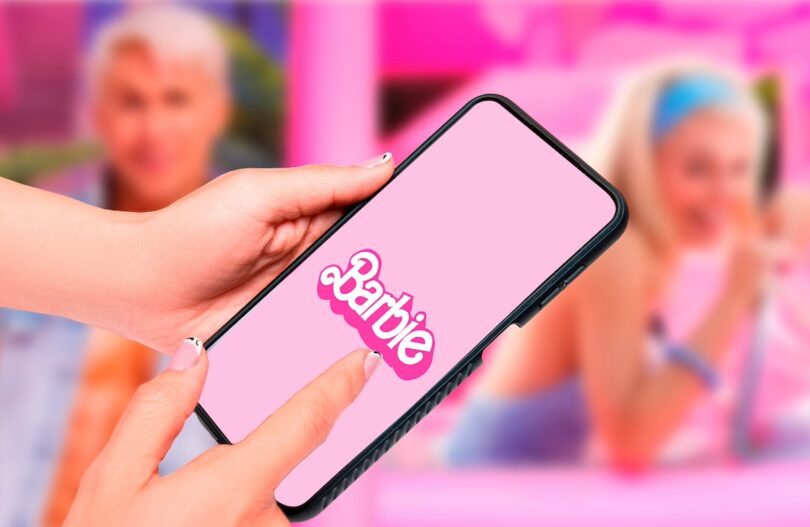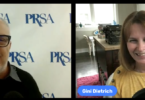The Barbie brand is a paradoxical symbol of imagination, comfort, sexism, objectification, feminism and conflicted cultural influence that has entranced and challenged children and adults alike for generations.
The “Barbie” film is empowering women of all identities as they reclaim Barbie as a symbol of inclusivity. The movie, along with its promotional campaign, continues to show a growing impact on the collective empowerment of women.
The film, a feminist masterpiece to some and too basic for others, has achieved widespread influence in the consumer marketplace and, as shared widely on social media, has prompted many women to reassess their roles in the world. This societal shift was exemplified by the cool reception to Joy Koy’s “Barbie” jokes at the Golden Globe Awards this past January, where it was clear that Barbie’s body parts were now off the table.
Ahead of the Academy Awards ceremony on March 10, when “Barbie” is up for several awards, including Best Picture, let’s reflect on the film’s marketing campaign to extract valuable insights for practitioners. This retrospective examination could offer key learnings for those in the field.
The film’s implications for communicators
Few movie campaigns have left as powerful a mark as the strategic collaboration between Warner Bros. and Mattel for the 2023 “Barbie” movie. According to The Guardian, their combined forces resulted in 100 partnerships estimated to be worth $70 million, with data from Axios tallying over 500,000 earned media placements. Mattel, known for its tight management of the Barbie brand, embraced a calculated risk in collaborating with Margot Robbie and Greta Gerwig. According to CNN, the approach paid off at the box office with a gross of over $1.5 billion.
In an Axios article featuring Lisa McKnight, Mattel’s executive vice president and chief brand officer, the analysis highlighted the campaign’s comprehensive strategic approach in achieving its communication goal of being “ubiquitous” during the summer of 2023. This goal aimed not only to redefine the positioning of the Barbie brand as a valuable intellectual property but also to chart a new trajectory for Mattel in the realm of integrated movie campaigns, underscoring the company’s intent to be a contender in pre-awareness IP.
To achieve their objective, the “Barbie” team deliberately employed a breadcrumb strategy, offering three tips that PR professionals can incorporate into their upcoming campaigns:
- Small bites of content were released one at a time, beginning in late 2022 through the film’s release in July 2023, as reported by BBC News.
- The brand team campaigned with confidence via a more subtle approach, which allowed audiences to experience the feeling of discovery with each content release. For example, Barbie’s initial interviews with Margot Robbie, Ryan Gosling and Greta Gerwig revealed little about what the movie was about while galvanizing its intergenerational audience.
- The intrigue and investment in the content as it rolled out, as experienced by the campaign’s target audiences, led to increased engagement.
This “Barbie” garners media
The film’s PR tactics generated immeasurable earned media coverage across varied outlets, from local TV to national outlets like The New Yorker, The Wall Street Journal, The New York Times, CNN and the BBC. The press tour saw a towering Barbie in New York, elements of a Barbie Dream House replicated on the red carpet in Los Angeles and the construction of a Barbie-themed AirBnB, attracting Architectural Digest for a tour.
PR pros can take note of the creativity and diversity of the movie’s coverage. No category was left untouched. Highlights for future campaign ideation include:
- Tech publications covered strategic partnerships with Roku and Google and the brand’s data strategies.
- Women’s sports publications utilized the Barbie campaign in best practices for promoting women’s sports.
- Travel media reported on hotels decorated in the style of Barbie.
- Fashion and retail media included stories about brand partnerships such as Ruggable, Zara and Crocs.
- Art magazines covered the film’s colors and set design.
- The song “I’m Just Ken” hit the Billboard charts, and the soundtrack received attention from music media.
- Almost every major outlet covered the history of Barbie, the brand’s feminist cultural implications and what it means to have a doll remain a reflection of who we are as a society.
But shared media was where Barbie shone brightest. This was accomplished with intentional and intangible shareable content — like taglines and movie posters — that went viral and became popular memes:
- The tagline, “She’s everything. He’s just Ken.” landed in pop culture contexts from “Legally Blonde” to Charles and Diana.
- The “Barbie” campaign integrated artificial intelligence in the form of the AI Barbie Selfie Generator, created by Warner Bros and PhotoRoom, allowing users to place themselves into the brand’s movie poster creative and write their own Barbie taglines.
- The Barbenheimer social media craze — where moviegoers made a double feature of “Barbie” and “Oppenheimer” — was unplanned but effective. It proved that on X, Instagram and TikTok sometimes opposite aesthetics can inspire a tidal wave of memes and moviegoers.
Impactful Barbie
What made the “Barbie” campaign uniquely impactful was that it inherently engaged with the audience on a personal level, and the promotional elements became ownable by the public, allowing for alignment with individual identities. Additionally, the campaign embraced intersectionality, which is evident in casting choices, the soundtrack and a social media strategy that facilitated connections between marginalized groups and Barbie. In doing so, this not only generated widespread attention for the movie but fostered a sense of inclusivity and empowerment, making Barbie more relatable and relevant to diverse audiences.
The 2023 “Barbie” movie and its marketing efforts will remain, as The Hollywood Reporter stated, “a campaign for the ages,” demonstrating the power of strategic collaboration and providing valuable insights for practitioners. Many have opined whether the Oscars will recognize “Barbie” or stick with “Oppenheimer.” In either case, as society grapples with the treatment of women celebrities from Britney Spears to Lindsay Lohan and becomes more aware of the marginalization of women of color and the LGBTQ+ community, “Barbie” and her campaign arrive at the most opportune time to usher in what Barbie does best: change.







